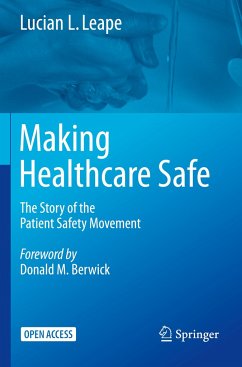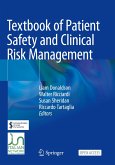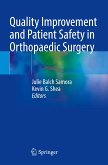This unique and engaging open access title provides a compelling and ground-breaking account of the patient safety movement in the United States, told from the perspective of one of its most prominent leaders, and arguably the movement's founder, Lucian L. Leape, MD. Covering the growth of the field from the late 1980s to 2015, Dr. Leape details the developments, actors, organizations, research, and policy-making activities that marked the evolution and major advances of patient safety in this time span. In addition, and perhaps most importantly, this book not only comprehensively details how and why human and systems errors too often occur in the process of providing health care, it also promotes an in-depth understanding of the principles and practices of patient safety, including how they were influenced by today's modern safety sciences and systems theory and design. Indeed, the book emphasizes how the growing awareness of systems-design thinking and the self-educationand commitment to improving patient safety, by not only Dr. Leape but a wide range of other clinicians and health executives from both the private and public sectors, all converged to drive forward the patient safety movement in the US.
Making Healthcare Safe is divided into four parts: I. In the Beginning describes the research and theory that defined patient safety and the early initiatives to enhance it. II. Institutional Responses tells the stories of the efforts of the major organizations that began to apply the new concepts and make patient safety a reality. Most of these stories have not been previously told, so this account becomes their histories as well. III. Getting to Work provides in-depth analyses of four key issues that cut across disciplinary lines impacting patient safety which required special attention. IV. Creating a Culture of Safety looks to the future, marshalling the best thinking about what it will take to achieve the safe care we alldeserve.
Captivatingly written with an "insider's" tone and a major contribution to the clinical literature, this title will be of immense value to health care professionals, to students in a range of academic disciplines, to medical trainees, to health administrators, to policymakers and even to lay readers with an interest in patient safety and in the critical quest to create safe care.
Making Healthcare Safe is divided into four parts: I. In the Beginning describes the research and theory that defined patient safety and the early initiatives to enhance it. II. Institutional Responses tells the stories of the efforts of the major organizations that began to apply the new concepts and make patient safety a reality. Most of these stories have not been previously told, so this account becomes their histories as well. III. Getting to Work provides in-depth analyses of four key issues that cut across disciplinary lines impacting patient safety which required special attention. IV. Creating a Culture of Safety looks to the future, marshalling the best thinking about what it will take to achieve the safe care we alldeserve.
Captivatingly written with an "insider's" tone and a major contribution to the clinical literature, this title will be of immense value to health care professionals, to students in a range of academic disciplines, to medical trainees, to health administrators, to policymakers and even to lay readers with an interest in patient safety and in the critical quest to create safe care.








